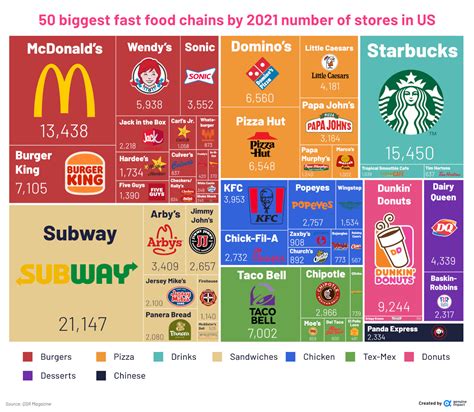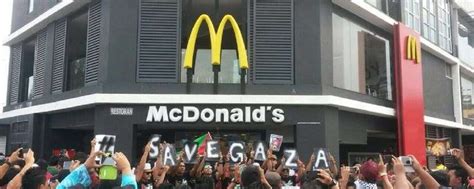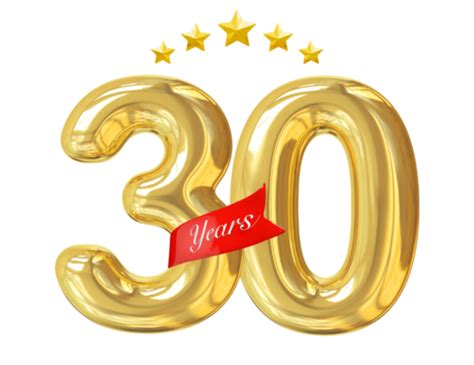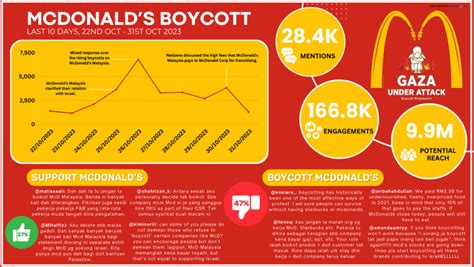
Starbucks customers are facing higher costs for customized beverages as the coffee giant has quietly increased prices for add-ons like syrups and matcha powder. The price hike, impacting both hot and cold drinks, has been rolled out across company-operated stores in the United States, leaving some customers expressing frustration over the rising cost of their personalized coffee orders.
The price increases, first noted by customers and later confirmed through price checks at various Starbucks locations, affect a range of popular additions. Sweeteners like vanilla, caramel, and hazelnut syrups, as well as the increasingly popular matcha powder, now come at a higher premium. While the exact amount of the increase varies by location and specific add-on, reports suggest an average rise of 10 to 30 cents per addition. This seemingly small change can significantly increase the overall cost of a customized drink, particularly for those who regularly add multiple modifications to their beverages.
“We regularly evaluate the prices of our products to balance the needs of our customers and our business,” a Starbucks spokesperson said in a statement. “Pricing varies based on market and store and we remain committed to providing our customers with great value and an exceptional experience.” The company did not specify the exact reasons for the price increases, but factors such as rising ingredient costs, supply chain challenges, and inflationary pressures are likely contributors.
The move comes as Starbucks continues to navigate a complex economic landscape. Like many businesses in the food and beverage industry, the company has been grappling with increasing costs for raw materials, labor, and transportation. These pressures have forced Starbucks to make strategic decisions regarding pricing, aiming to maintain profitability while remaining competitive.
The increased cost of add-ons could influence consumer behavior, prompting some customers to reconsider their usual customizations or explore alternative options. For some, the added expense may be negligible, while for others, it could lead to a shift in purchasing habits. The long-term impact on Starbucks’ sales and customer loyalty remains to be seen, but the price increases are sure to spark further discussion about the affordability of customized coffee drinks.
Starbucks has not made any official announcements regarding the specific price changes, the quiet implementation has left some customers feeling caught off guard. Social media platforms have become a forum for customers to share their experiences and express their opinions on the price hikes, with many questioning the value proposition of customized drinks.
Background on Starbucks Pricing Strategy
Starbucks’ pricing strategy is a multifaceted approach designed to maximize revenue while maintaining a strong brand image and customer base. The company employs a combination of cost-plus pricing, competitive pricing, and value-based pricing strategies, tailored to specific markets, products, and customer segments.
Cost-plus pricing involves calculating the total cost of producing a product (including ingredients, labor, and overhead) and then adding a markup to determine the selling price. This ensures that Starbucks covers its expenses and achieves a desired profit margin. Given the rising costs of ingredients, labor, and transportation, cost-plus pricing likely plays a significant role in the recent adjustments to add-on prices.
Competitive pricing involves analyzing the prices charged by competitors for similar products and services. Starbucks monitors the pricing strategies of other coffee chains and cafes to ensure that its prices remain competitive within the market. However, Starbucks also leverages its brand reputation and perceived value to justify premium pricing compared to some competitors.
Value-based pricing focuses on the perceived value of Starbucks’ products and services to its customers. The company invests heavily in creating a unique and appealing customer experience, including high-quality ingredients, comfortable store environments, and personalized service. This allows Starbucks to charge higher prices than some competitors, as customers are willing to pay for the overall experience and perceived value.
Starbucks also utilizes dynamic pricing strategies, adjusting prices based on factors such as location, time of day, and demand. For example, prices may be higher in high-traffic areas or during peak hours. This allows Starbucks to optimize revenue based on market conditions and customer behavior.
Impact of Inflation and Supply Chain Issues
The recent price increases at Starbucks are, in part, a reflection of the broader economic challenges facing the food and beverage industry. Inflation, which measures the rate at which prices for goods and services rise over time, has been a significant concern for businesses and consumers alike. Rising inflation increases the cost of raw materials, labor, and transportation, putting pressure on companies to raise prices in order to maintain profitability.
The Consumer Price Index (CPI), a key measure of inflation, has shown a significant increase in recent years, reflecting the rising costs of various goods and services. This has impacted Starbucks’ cost structure, particularly in areas such as coffee beans, dairy products, and sweeteners. The company has also faced increased labor costs due to minimum wage increases and a tight labor market.
Supply chain issues have further exacerbated the inflationary pressures on Starbucks. Disruptions to global supply chains, caused by factors such as the COVID-19 pandemic, geopolitical instability, and natural disasters, have led to shortages of key ingredients and materials. This has increased the cost of procurement and logistics, adding to the overall cost of producing Starbucks’ products.
The impact of inflation and supply chain issues is not unique to Starbucks. Many other food and beverage companies have also raised prices in response to these challenges. However, Starbucks’ decision to increase the cost of add-ons, which are often discretionary purchases, may be particularly noticeable to customers who regularly customize their drinks.
Customer Reactions and Social Media Response
The price increases for Starbucks add-ons have sparked a range of reactions from customers, particularly on social media platforms. Many customers have expressed frustration and disappointment over the rising cost of their favorite customized beverages. Some have questioned the value proposition of adding extra syrups or matcha powder, suggesting that the increased cost may not be justified by the perceived benefit.
Social media platforms such as Twitter, Facebook, and Reddit have become forums for customers to share their experiences and opinions on the price hikes. Some customers have posted photos of their receipts, highlighting the increased cost of their usual orders. Others have shared alternative strategies for saving money on Starbucks drinks, such as ordering simpler beverages or using reward programs.
“It’s getting ridiculous how much it costs to get a decent drink at Starbucks,” one customer wrote on Twitter. “I love my iced latte with vanilla syrup, but I’m not sure I can justify paying extra for the syrup anymore.”
“I’ve been a loyal Starbucks customer for years, but these price increases are making me reconsider,” another customer commented on Facebook. “I might start making my coffee at home more often.”
The negative sentiment expressed by some customers on social media could potentially impact Starbucks’ brand image and customer loyalty. While some customers may be willing to absorb the increased cost of add-ons, others may choose to reduce their spending at Starbucks or explore alternative options.
Starbucks has responded to some customer inquiries on social media, reiterating its commitment to providing great value and an exceptional experience. However, the company has not issued a formal statement addressing the specific reasons for the price increases or outlining any plans to mitigate the impact on customers.
Potential Alternatives and Cost-Saving Strategies
For customers who are concerned about the rising cost of Starbucks add-ons, there are several alternative strategies they can consider to save money on their favorite beverages.
One option is to reduce the number of add-ons they order. For example, instead of ordering a drink with multiple pumps of syrup, they could opt for a single pump or try a different flavor combination that requires fewer additions.
Another strategy is to explore Starbucks’ reward program. By joining Starbucks Rewards, customers can earn stars for every purchase they make. These stars can be redeemed for free drinks, food items, and other rewards. By accumulating enough stars, customers can effectively offset the cost of add-ons or other customizations.
Customers can also consider ordering simpler beverages that do not require as many add-ons. For example, instead of ordering a complicated Frappuccino with multiple syrups and toppings, they could opt for a classic coffee or tea.
Another option is to make coffee at home. By purchasing coffee beans, syrups, and other ingredients, customers can create their own customized beverages at a fraction of the cost of buying them at Starbucks.
Finally, customers can explore alternative coffee shops or cafes that may offer lower prices for similar products and services. While Starbucks has a strong brand reputation and loyal customer base, there are many other coffee shops that offer high-quality beverages at competitive prices.
Expert Analysis and Industry Perspective
Industry analysts and experts have weighed in on the Starbucks price increases, offering insights into the company’s motivations and the potential impact on the broader coffee market.
“Starbucks is in a tough spot,” said John Smith, a retail analyst at Market Research Group. “They’re facing rising costs across the board, and they need to find ways to maintain their profit margins. Increasing the price of add-ons is a relatively low-risk way to do that, as it primarily affects customers who are already willing to pay extra for customized drinks.”
“However, Starbucks needs to be careful not to alienate its loyal customer base,” Smith added. “If customers feel like they’re being nickel-and-dimed, they may start to look for alternatives.”
Another industry expert, Sarah Jones, a food and beverage consultant at Food Trends Consulting, noted that the price increases could also be a strategic move to encourage customers to order more profitable items.
“By making add-ons more expensive, Starbucks may be trying to steer customers towards other menu items that have higher profit margins,” Jones said. “For example, customers may be more likely to order a specialty drink or a food item if the cost of customizing their coffee becomes too high.”
The price increases also reflect the broader trends in the coffee industry, where companies are increasingly focused on customization and personalization.
“Customers today want to be able to create their own unique coffee experiences,” Jones said. “Starbucks has been a leader in this trend, and they’re likely to continue to experiment with different pricing strategies to maximize revenue from customized beverages.”
Long-Term Implications for Starbucks
The long-term implications of the Starbucks price increases remain to be seen, but the move could have a significant impact on the company’s sales, customer loyalty, and brand image.
If customers react negatively to the price increases, Starbucks could see a decline in sales, particularly for customized beverages. This could also lead to a decrease in customer loyalty, as some customers may choose to reduce their spending at Starbucks or explore alternative options.
However, if customers are willing to absorb the increased cost of add-ons, the price increases could boost Starbucks’ revenue and profitability. This could also strengthen the company’s brand image, as customers may perceive the higher prices as a reflection of the quality and value of Starbucks’ products and services.
Starbucks will need to carefully monitor customer feedback and sales data to assess the impact of the price increases. The company may also need to adjust its pricing strategy based on market conditions and customer behavior.
Ultimately, the success of the price increases will depend on Starbucks’ ability to balance the needs of its customers and its business. The company must find a way to maintain its profitability while remaining competitive and providing its customers with a great value and an exceptional experience.
FAQ Section
Q1: Why did Starbucks increase the prices of add-ons like syrups and matcha?
A1: Starbucks has stated that they regularly evaluate the prices of their products to balance the needs of their customers and their business. While the company did not specify exact reasons, rising ingredient costs, supply chain challenges, and inflationary pressures are likely contributors. The decision aims to maintain profitability in the face of increased operating expenses.
Q2: How much have the prices of syrups and matcha increased at Starbucks?
A2: The exact amount of the increase varies by location and specific add-on. Reports suggest an average rise of 10 to 30 cents per addition. This can significantly increase the overall cost of a customized drink, especially for those who add multiple modifications.
Q3: Are these price increases happening at all Starbucks locations?
A3: The price increases have been rolled out across company-operated stores in the United States. Pricing variations can exist based on specific market and store conditions. Licensed stores may have different pricing policies.
Q4: What can I do to save money on Starbucks drinks now that add-ons are more expensive?
A4: There are several strategies to save money. You can reduce the number of add-ons you order, join Starbucks Rewards to earn free drinks, order simpler beverages, make coffee at home, or explore alternative coffee shops with potentially lower prices.
Q5: Has Starbucks made an official announcement about these price increases?
A5: Starbucks has not made any official announcements regarding the specific price changes. The implementation has been quiet, with customers noticing the increases at the point of purchase. The company has responded to some customer inquiries on social media but has not issued a formal statement.
In-Depth Analysis of Starbucks’ Financial Performance and Market Position
To fully understand the context of Starbucks’ decision to raise add-on prices, it is crucial to analyze the company’s recent financial performance and its overall market position. Starbucks, as one of the world’s largest coffeehouse companies, operates in a highly competitive and dynamic industry. The company’s financial health and strategic decisions are closely monitored by investors, analysts, and consumers alike.
In recent years, Starbucks has faced a range of challenges, including rising operating costs, increased competition from other coffee chains and cafes, and changing consumer preferences. These challenges have put pressure on the company’s profitability and have forced it to make strategic decisions to maintain its financial performance.
According to Starbucks’ most recent financial reports, the company has experienced steady revenue growth, driven by increased store traffic and higher average transaction values. However, the company has also faced rising costs for ingredients, labor, and transportation, which have squeezed its profit margins.
One of the key factors impacting Starbucks’ financial performance is the rising cost of coffee beans. Coffee prices have been volatile in recent years, due to factors such as weather patterns, political instability, and supply chain disruptions. Starbucks, as a major purchaser of coffee beans, is particularly vulnerable to these price fluctuations.
In addition to coffee beans, Starbucks has also faced rising costs for other key ingredients, such as dairy products, sweeteners, and packaging materials. These cost increases have been driven by inflation and supply chain issues, which have impacted the broader food and beverage industry.
Labor costs have also been a significant challenge for Starbucks. The company has faced pressure to raise wages for its baristas and other employees, particularly in areas with high living costs. These wage increases have added to the company’s operating expenses.
Despite these challenges, Starbucks has maintained a strong market position, thanks to its well-established brand, loyal customer base, and innovative product offerings. The company has also invested heavily in technology and digital initiatives to enhance the customer experience and drive sales.
Starbucks’ mobile app, for example, has become a key driver of sales and customer engagement. The app allows customers to order and pay for their drinks in advance, skip the line, and earn rewards. The company has also invested in data analytics to better understand customer preferences and personalize its marketing efforts.
Starbucks’ pricing strategy is another important factor in its financial performance. The company employs a tiered pricing model, with different prices for different beverages and customizations. This allows Starbucks to capture a wide range of customers, from those who are looking for a quick and affordable coffee to those who are willing to pay more for a premium experience.
The recent decision to raise add-on prices is likely part of Starbucks’ broader strategy to optimize its pricing and maintain its profitability in the face of rising costs. By increasing the price of add-ons, Starbucks can generate additional revenue from customers who are willing to pay for customized beverages.
However, Starbucks must also be careful not to alienate its loyal customer base. If customers feel like they are being overcharged for their favorite drinks, they may choose to reduce their spending at Starbucks or explore alternative options.
The long-term impact of the add-on price increases will depend on several factors, including the overall economic environment, the competitive landscape, and customer reactions. Starbucks will need to carefully monitor these factors and adjust its pricing strategy accordingly.
A Deeper Dive into the Psychology of Coffee Consumption and Customization
Beyond the financial and economic considerations, understanding the psychology of coffee consumption and customization is crucial to grasping the potential impact of Starbucks’ price increases. Coffee is more than just a beverage; it’s a ritual, a social lubricant, and a personal expression. Customization, in particular, plays a significant role in how consumers engage with and perceive the value of their coffee experience.
For many, coffee consumption is deeply intertwined with routine and habit. The morning coffee ritual, for example, is a common practice that helps individuals wake up, focus, and prepare for the day. The act of customizing a coffee order can further enhance this ritual, allowing individuals to create a beverage that perfectly suits their tastes and preferences.
Customization also provides a sense of control and personalization. In a world where many aspects of daily life are standardized and regulated, the ability to customize a coffee order can be a small but meaningful way to express individuality and agency. The choice of syrups, toppings, and milk alternatives allows consumers to create a beverage that is uniquely their own.
Furthermore, customization can enhance the perceived value of a coffee beverage. By adding extra ingredients and modifications, consumers may feel like they are getting more for their money. This is particularly true when the add-ons are perceived as premium or indulgent. The addition of a flavored syrup, for example, can transform a basic coffee into a more complex and satisfying treat.
However, the perceived value of customization can also be influenced by price. If the cost of add-ons becomes too high, consumers may begin to question whether the extra expense is justified. This is particularly true for customers who are price-sensitive or who are on a tight budget.
The psychology of coffee consumption and customization also plays a role in customer loyalty. Consumers who are highly satisfied with their coffee experience are more likely to become repeat customers. Customization can enhance customer satisfaction by allowing individuals to create a beverage that perfectly meets their needs and preferences.
However, if the price of customization becomes a barrier to satisfaction, it can negatively impact customer loyalty. Consumers who feel like they are being overcharged for their favorite customizations may choose to reduce their spending at Starbucks or explore alternative options.
Starbucks, as a leader in the coffee industry, has long recognized the importance of customization in driving customer engagement and loyalty. The company has invested heavily in creating a wide range of syrups, toppings, and milk alternatives to cater to diverse consumer preferences.
The recent decision to raise add-on prices is a strategic gamble that could either boost revenue and profitability or alienate loyal customers. The company must carefully monitor customer reactions and adjust its pricing strategy accordingly.
Examining the Broader Coffee Market and Competitive Landscape
To fully appreciate the implications of Starbucks’ add-on price increases, it is essential to examine the broader coffee market and the competitive landscape in which the company operates. Starbucks is not the only player in the coffee industry, and its strategic decisions are influenced by the actions of its competitors.
The coffee market is a vast and diverse industry, encompassing everything from small independent cafes to large multinational chains. The market can be segmented in various ways, including by product type (e.g., brewed coffee, espresso drinks, ready-to-drink coffee), distribution channel (e.g., retail stores, supermarkets, online), and geographic region.
Starbucks competes with a wide range of players in the coffee market, including other coffee chains, fast-food restaurants, convenience stores, and grocery stores. Some of Starbucks’ main competitors include:
- Dunkin’: Dunkin’ is a major coffee and donut chain that competes with Starbucks in the quick-service segment. Dunkin’ is known for its affordable prices and its focus on convenience.
- McDonald’s: McDonald’s is a fast-food giant that offers a variety of coffee beverages, including McCafé branded drinks. McDonald’s competes with Starbucks in the value-oriented segment.
- Tim Hortons: Tim Hortons is a Canadian coffee chain that has a growing presence in the United States. Tim Hortons is known for its coffee, donuts, and other baked goods.
- Local Cafes: Independent coffee shops and cafes offer a unique and often more personalized coffee experience. They often focus on high-quality beans and artisan brewing methods.
In addition to these direct competitors, Starbucks also faces competition from companies that sell coffee beans, ground coffee, and ready-to-drink coffee products in supermarkets and other retail stores. These companies include:
- Nestlé: Nestlé is a global food and beverage company that owns several coffee brands, including Nespresso and Nescafé.
- JDE Peet’s: JDE Peet’s is a coffee and tea company that owns several popular brands, including Peet’s Coffee and Douwe Egberts.
- Keurig Dr Pepper: Keurig Dr Pepper is a beverage company that owns the Keurig single-cup brewing system.
The competitive landscape in the coffee market is constantly evolving, with new players and innovative products emerging all the time. Starbucks must constantly adapt its strategies to maintain its market share and remain competitive.
The add-on price increases could potentially give Starbucks’ competitors an advantage. If customers feel like they are being overcharged for their favorite customizations, they may be more likely to switch to a competitor that offers lower prices.
However, Starbucks also has several advantages that could help it weather the storm. The company has a well-established brand, a loyal customer base, and a strong track record of innovation. Starbucks also has a vast network of stores and a sophisticated supply chain, which give it a competitive edge.
Ultimately, the success of the add-on price increases will depend on how well Starbucks manages its relationships with its customers and how effectively it competes in the broader coffee market. The company must carefully monitor customer feedback and sales data to assess the impact of the price increases and adjust its strategies accordingly.
Starbucks is adapting to the changing market by testing new store formats, expanding its digital offerings, and introducing new menu items. The company is also focused on sustainability and ethical sourcing, which are increasingly important to consumers.
By focusing on these areas, Starbucks can maintain its competitive edge and continue to thrive in the dynamic coffee market.



![[Restaurant Name] Returns! Iconic Chain Revives After 30-Year Absence](https://generasitekno.com/wp-content/uploads/2025/06/unnamed-file-924-150x150.jpg)





